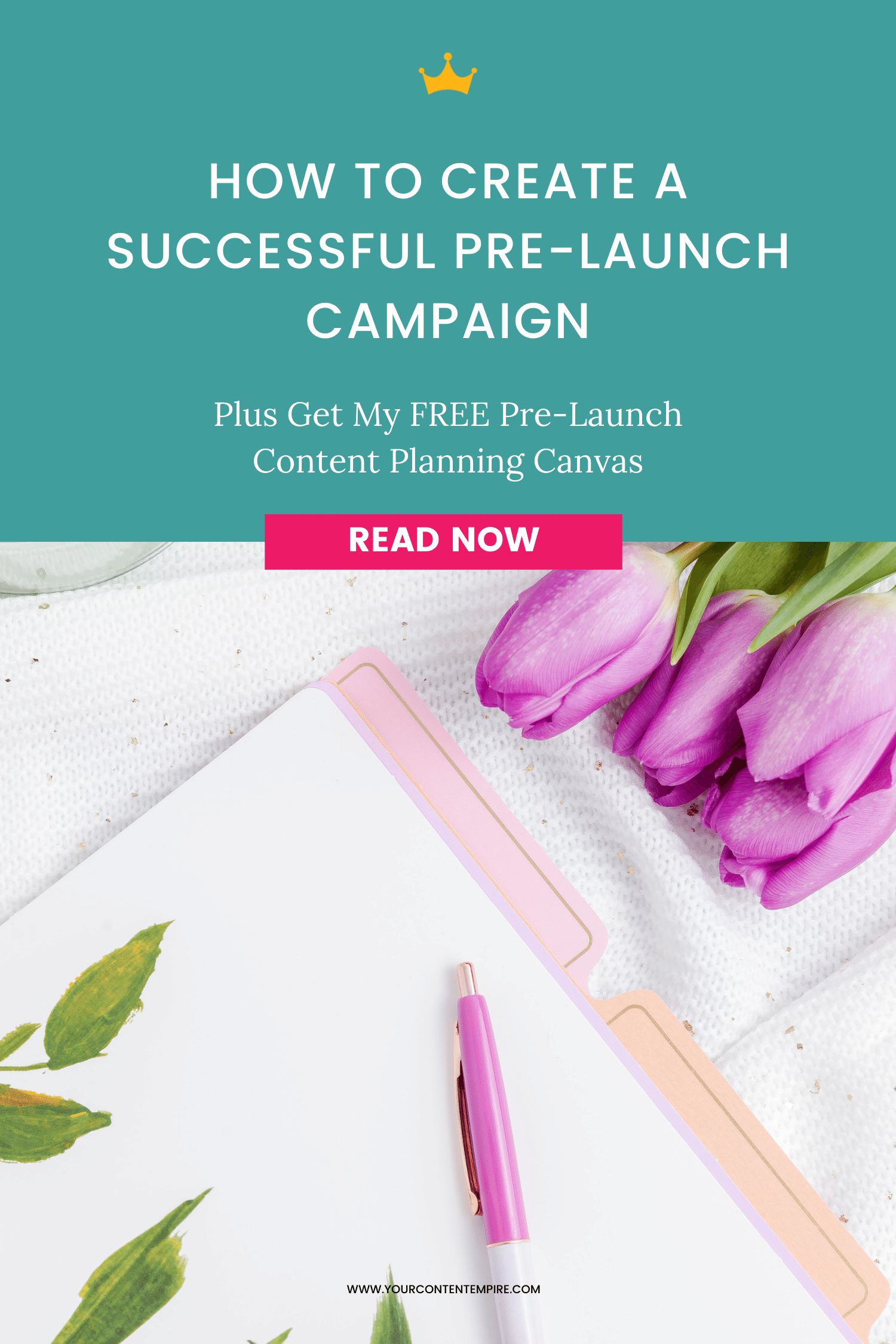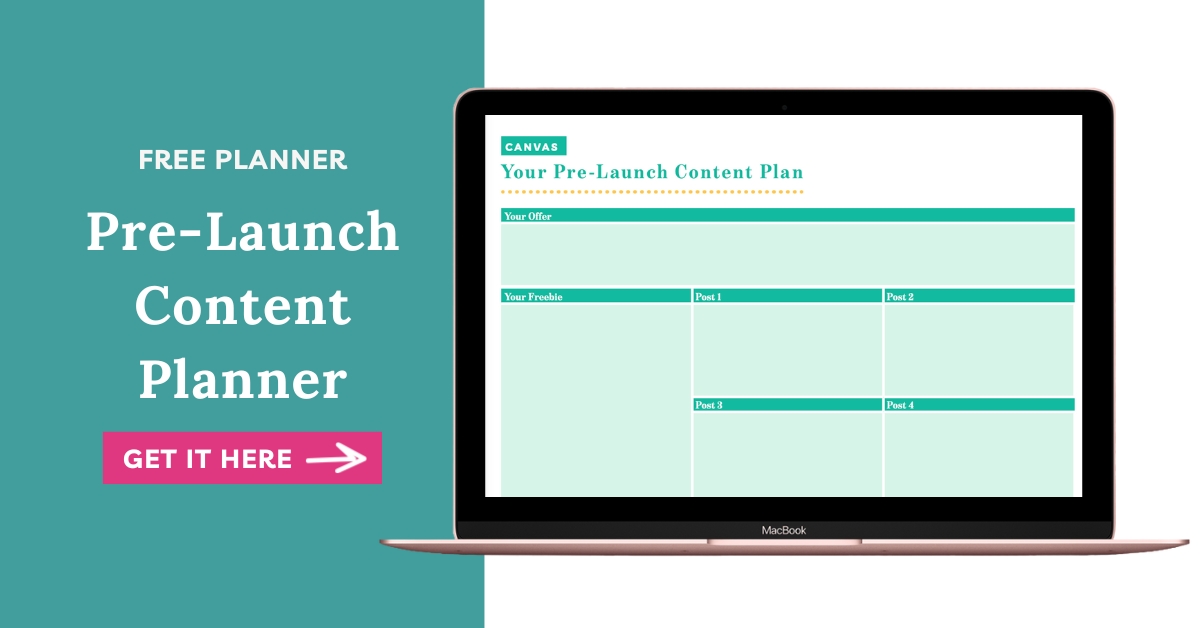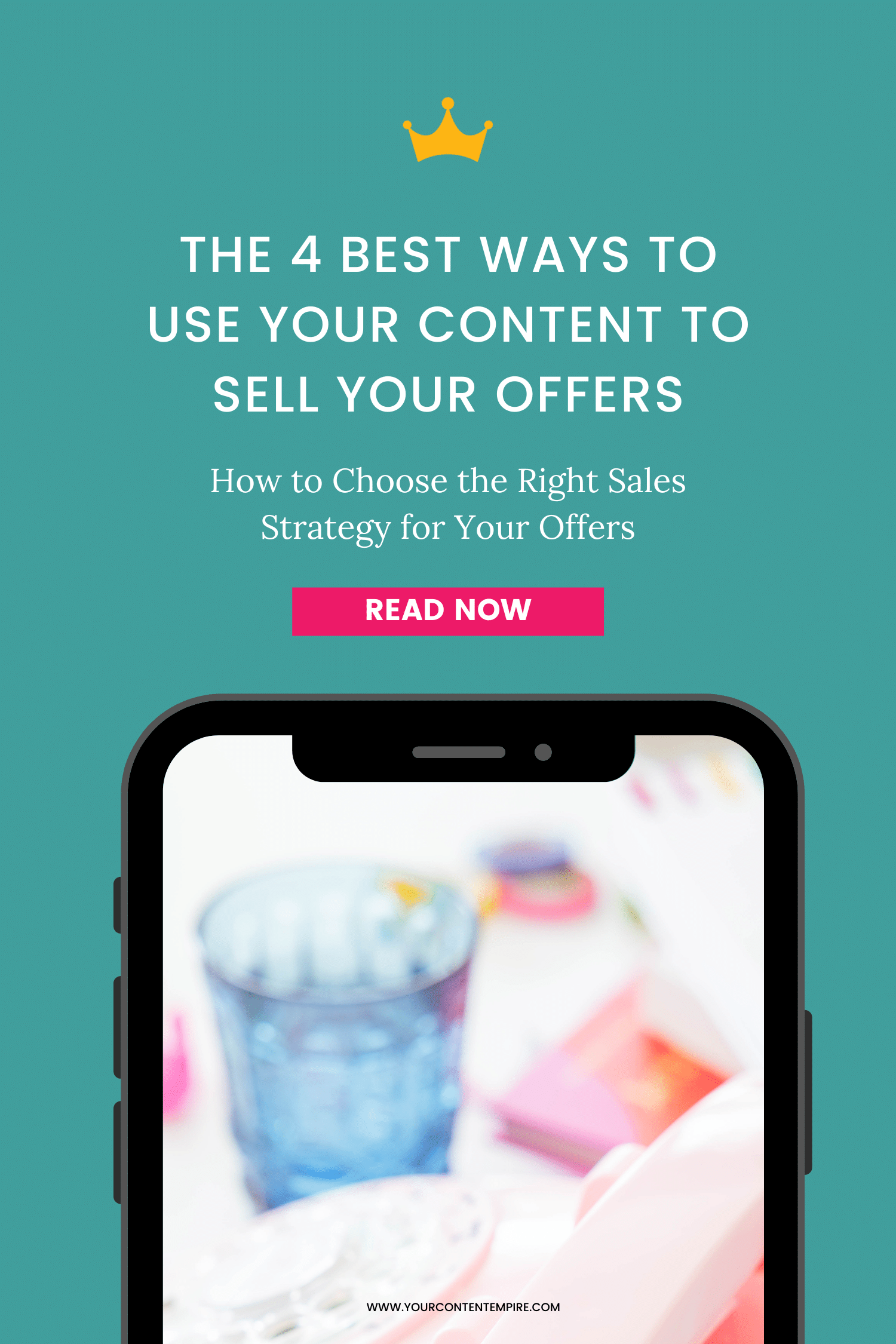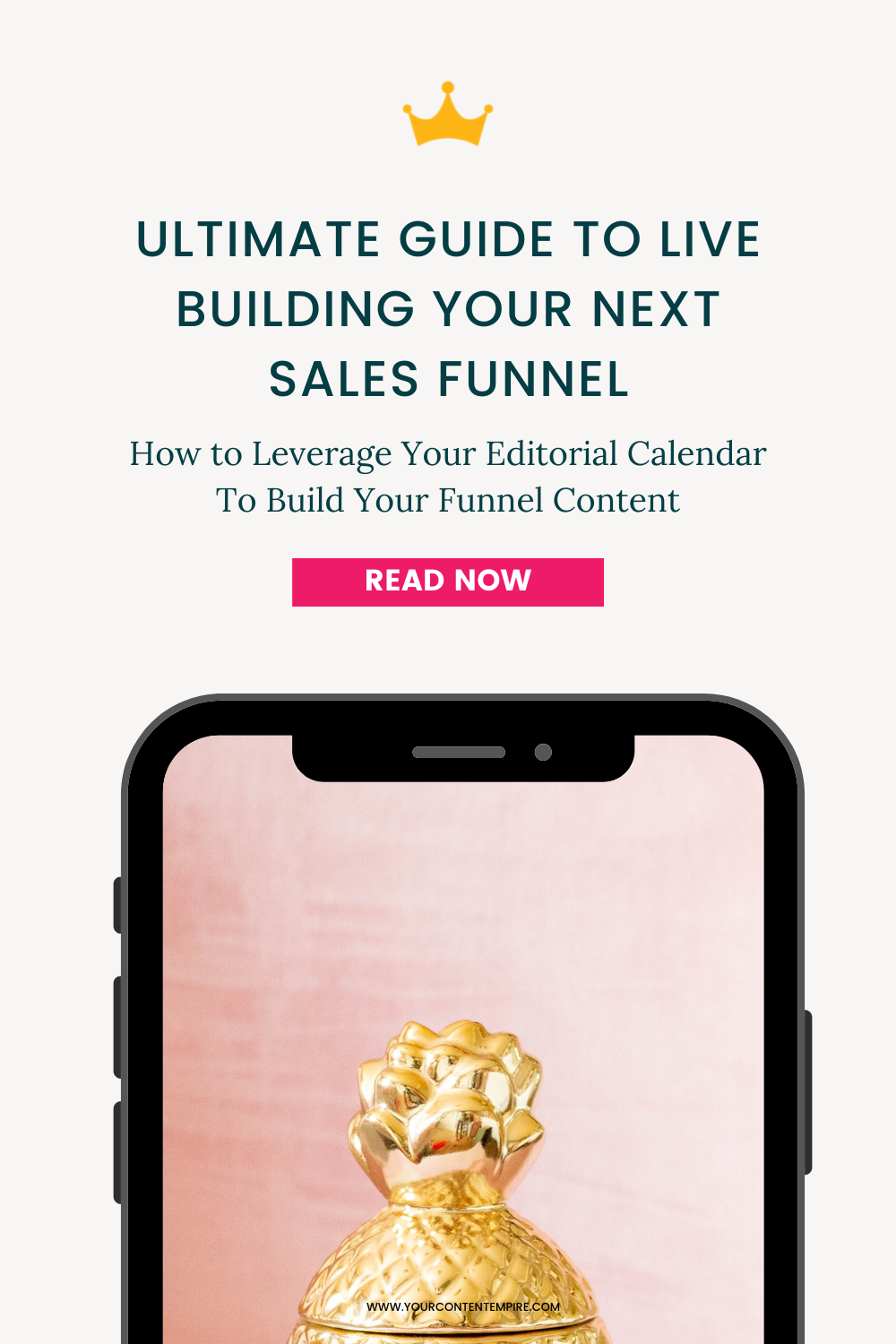Was your last launch a total bust? Most of my agency clients have tried launching a course or product before coming to work with me but haven’t been happy with the results they’ve gotten. Most of what you hear about first-time launches is a bunch of crap – barely anyone gets it completely right the first time. And usually, it's a result of not leveraging a strategy I call the pre-launch campaign.
Prefer to watch this blog post instead? Click on the video below!
That’s why the first thing I do with my private clients is to dissect their previous launches to get mighty clear on what went wrong.
Usually, it comes down to the same few issues:
- not enough traffic
- the messaging isn’t clear or aligned
- not enough time was spent in the pre-launch period growing an interest list
The pre-launch period is my favourite way to boost my launch results (after all, we’re not all Beyoncé or Taylor Swift who can just drop albums without any warning, alrighty?)
What’s the Purpose of a Pre-Launch Campaign?
The purpose of a pre-launch campaign is to create an email list segment full of leads who’ve said that they’re interested in the topic of what you’re about to offer. Your conversion rates are always going to be better if you’re selling to an audience who you’ve pre-validated with your content rather than one who barely remembers why they signed up for your list in the first place.
Just to give you an idea of how powerful launching to a validated interest list is rather than anyone who’ll listen, I want to share my 2021 launch stats so far. When I launch to my entire email list, my conversion rates range between 1-2%, and unsubscribes are just as high.
When I take the time to build an interest list first and only launch to those who’ve indicated they’re interested in the topic, my conversion rates are between 5-8% (and even as high as 20% in my most recent launch using a workshop sales launch strategy). Plus in the ‘launch to an interest list’ case, unsubscribes were pretty much non-existent.
Here’s what a pre-launch campaign strategy boils down to: we’re theming all of the content we release to line up with what we’re about to sell.
Here are your basic call-to-actions for a pre-launch campaign.
- If you have THIS PROBLEM, sign up for THIS FREEBIE or
- If you want THIS RESULT, sign up for THIS FREEBIE
By signing up for the freebie, they’re basically letting you know that they’re interested in the offer – they’re a pre-validated lead.
On the backend, you’re adding these subscribers to a tag or a segment of your list ( depending on what email service provider you’re using) so that when you’ve opened your cart, you can send your sales emails directly to them.
More than 50% of your launch work is during this pre-launch phase.
Objective for this phase: Grow your interest list as big as you can
The Pre-Launch Campaign Breakdown
You should plan for your pre-launch campaign to happen 3-4 weeks before you start selling. Here’s the basic overview of your pre-launch campaign period content:
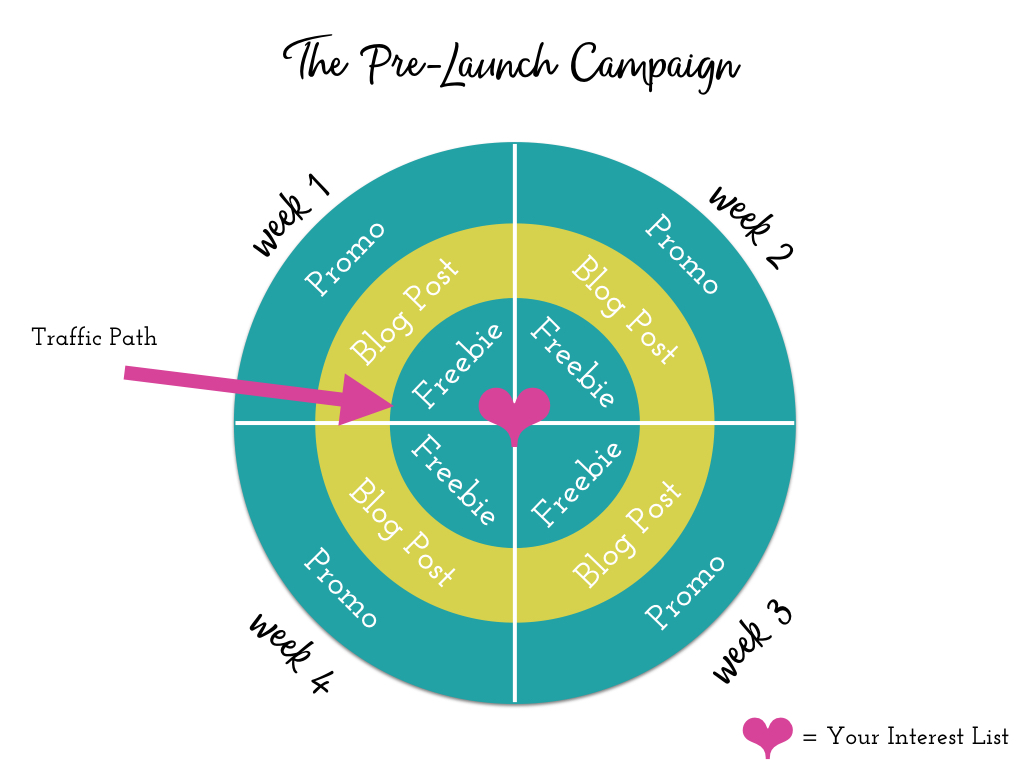
- Your promo content leads to your blog posts or directly to your freebie
- Your blog posts lead to your freebie
- Your freebie email sequence leads to your interest list (and eventually to your offer)
Step 1: Your Pre-Launch Freebie
Before you begin your pre-launch campaign, make sure you’ve decided on the freebie you’ll be using to get people onto your interest list. You can use a single freebie as the call-to-action for your posts or a few different content upgrades.
Ideally, choose something that gives the downloaders a taste of what to expect in the full program and prepares them for the program. To do this, ask yourself what a customer would ideally have in place before signing up for your paid offer.
Then set up your landing page, forms for your website and blog posts, ribbon for your website, links, and pinned posts for social media to drive traffic to this freebie.
Secondly, set up a tagging system so that when someone signs up for the freebie, they’re tagged with 2 tags:
- Freebie | Name of Freebie
- Interest | Name of Offer
Objective for this step: Create your pre-launch freebie, set up your sign-up system and interest tags.
Step 2: Your Pre-Launch Blog Posts
Whatever regular types of content you put out, theme your 4 posts before the sales part of your launch begins so they relate to what you’ll be selling. The call to action for each of these blog posts will be to sign up for the launch freebie so that you can get them on to your interest list.
When you send these blog posts to your email list in your weekly newsletter, you can set up a tagging system so that anyone who clicks on the blog post links in the email also gets added to your interest list via your tag: Interest | Name of Offer
Objective for this step: Publish 3-4 weekly blog posts relating to the topic of your launch before your cart opens each with a call-to-action to sign up for your pre-launch freebie.
Step 3: Your Pre-Launch Promotions
Finally, we want to promote the heck out of your pre-launch content. So each week, you’ll be sharing your weekly blog post and your freebie with your audience.
When creating your promotion strategy, it can be helpful to break it down into:
- Cold Traffic – How are you going to get this blog post and freebie in front of NEW people this week?
- Warm Traffic – How are you going to get this blog post and freebie in front of your EXISTING audience this week?
Objective for this step: Get as many people to your pre-launch content (the freebie and the blog posts) as possible
Get Planning Your Next Pre-Launch Campaign
Now you know all the steps you need to create a successful pre-launch campaign: create your pre-launch freebie, set up blog posts that encourage the reader to sign up for the freebie, and get your pre-launch promotions ready.
Not only will completing these steps make you feel prepared in your pre-launch, but by implementing these steps you’ll also find increased launch success and get a higher response from your audience.
Ready to get your pre-launch campaign organized? Download the Pre-Launch Campaign Planner below:


